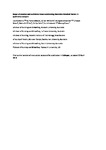Scope of practice and workforce issues confronting Australian Enrolled Nurses: A qualitative analysis.
| dc.contributor.author | Endacott, R | |
| dc.date.accessioned | 2018-05-26T15:34:27Z | |
| dc.date.issued | 2018-05-04 | |
| dc.identifier.issn | 1322-7696 | |
| dc.identifier.issn | 1876-7575 | |
| dc.identifier.uri | http://hdl.handle.net/10026.1/11600 | |
| dc.description.abstract |
Background: Enrolled Nurses constitute an important part of the Australian health care system. Recently, improvements to education and medication endorsement have initiated expansion to EN scope of practice. Aim: This paper reports on a study conducted to inform development of revised Nursing and Midwifery Board (NMBA) of Australia Enrolled Nurse practice standards that explored with ENs their scope of practice. Design: A qualitative design using focus groups and individual interviews with ENs across Australia. Data were analysed using thematic analysis. Findings: ENs work in diverse practice contexts with differing scope of practice. Confusion existed regarding EN scope of practice as a result of many different types of ENs in practice. Care of unstable patients was seen to be outside the EN scope of practice. They were also often required to supervise the work of nursing assistants and new registered nurses. Lack of career pathway was seen as a limitation to ENs. Conclusions: EN education and scope of practice has evolved significantly, particularly in many practice settings, since the existing standards were developed. Further work is needed to address issues related to EN supervision of new RNs and AINs (Assistants in Nursing), and clarity of EN supervision in specialist clinical areas. | |
| dc.format.extent | 80-85 | |
| dc.language | en | |
| dc.language.iso | en | |
| dc.publisher | Elsevier | |
| dc.subject | Enrolled nurse | |
| dc.subject | Focus group | |
| dc.subject | Qualitative | |
| dc.subject | Scope of practice | |
| dc.subject | Second level nurse | |
| dc.subject | Workforce | |
| dc.title | Scope of practice and workforce issues confronting Australian Enrolled Nurses: A qualitative analysis. | |
| dc.type | journal-article | |
| dc.type | Article | |
| plymouth.author-url | https://www.webofscience.com/api/gateway?GWVersion=2&SrcApp=PARTNER_APP&SrcAuth=LinksAMR&KeyUT=WOS:000460754300013&DestLinkType=FullRecord&DestApp=ALL_WOS&UsrCustomerID=11bb513d99f797142bcfeffcc58ea008 | |
| plymouth.issue | 1 | |
| plymouth.volume | 26 | |
| plymouth.publication-status | Published | |
| plymouth.journal | Collegian | |
| dc.identifier.doi | 10.1016/j.colegn.2018.04.001 | |
| plymouth.organisational-group | /Plymouth | |
| plymouth.organisational-group | /Plymouth/Faculty of Health | |
| plymouth.organisational-group | /Plymouth/Research Groups | |
| plymouth.organisational-group | /Plymouth/Research Groups/Institute of Health and Community | |
| plymouth.organisational-group | /Plymouth/Users by role | |
| dcterms.dateAccepted | 2018-04-02 | |
| dc.rights.embargodate | 2019-5-4 | |
| dc.identifier.eissn | 1876-7575 | |
| dc.rights.embargoperiod | Not known | |
| rioxxterms.versionofrecord | 10.1016/j.colegn.2018.04.001 | |
| rioxxterms.licenseref.uri | http://www.rioxx.net/licenses/all-rights-reserved | |
| rioxxterms.licenseref.startdate | 2018-05-04 | |
| rioxxterms.type | Journal Article/Review |


